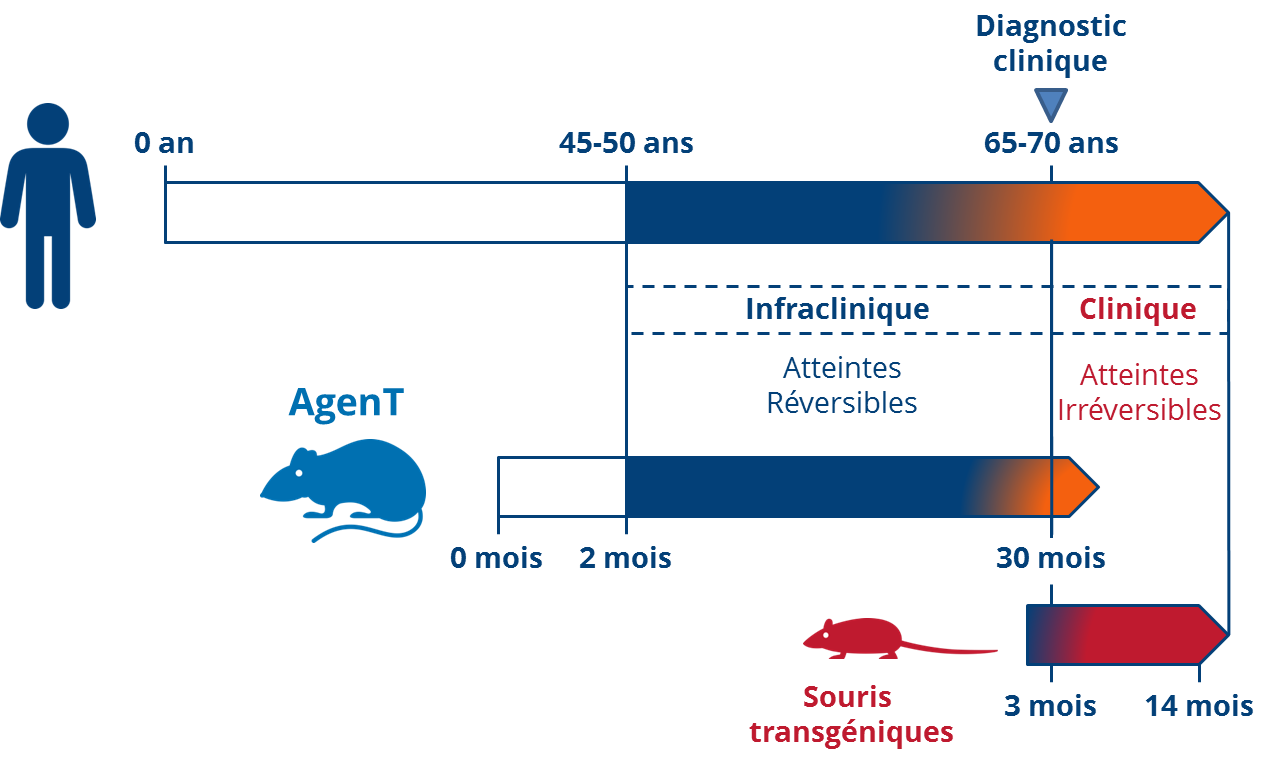The biological characteristics of Alzheimer's disease (AD) appear at least 20 years before the symptoms do (memory loss, etc.). To envision treatments for neuropathological lesions before they become irreversible, a better understanding of this silent phase is vital. However, there are currently no in vitro or animal models permitting the study of this extensive period preceding the development of AD symptoms.
Today's animal models express only one or the other of the two degenerative characteristics of AD, specifically the formation of tau-driven neurofibrillary tangles on one hand and that of neuronal Aβ42 plaques on the other.
A team of researchers from the François Jacob Institute of Biology, in partnership with Inserm, the CNRS, and the Paris-Descartes and Paris-Sud Universities have successfully developed murine models of very-early-stage AD that present both types of degeneration. There models, the first to offer pathological characteristics comparable to those of humans, will open new horizons for research in Alzheimer's disease.
These new models has been patented and presented in a press release.

Comparison of Alzheimer's disease progression 1/ in patients, 2/ in the AgenT models (the progression of cognitive disorders and the formation of senile plaques are very similar), 3/ and in currently-available transgenic models. © AgenT